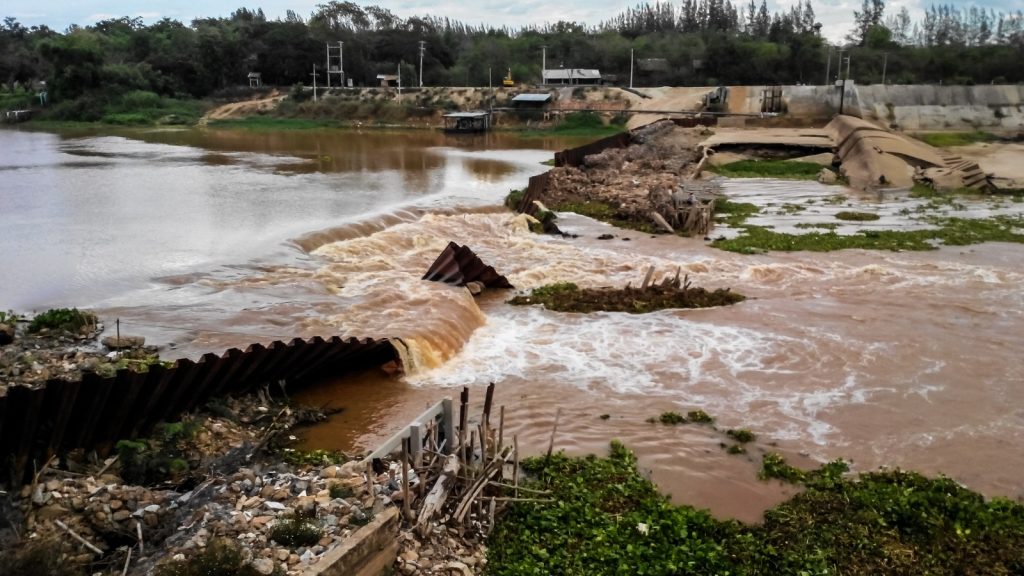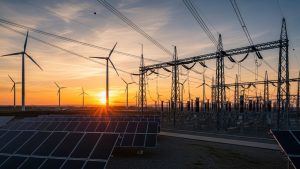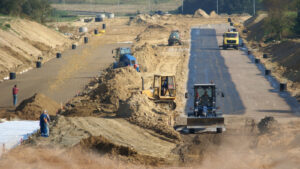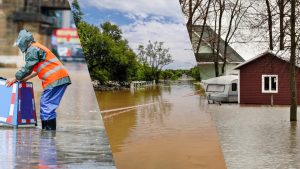A dam is a great way to collect water in order to utilise it for multiple purposes. Especially if a country or a region is not sure about the rain fall which can vary from time to time. This situation is exactly the same in Australia and that is why the Australian government and relevant authorities tend to maintain the health of their Dams up to the highest standards. However, you cannot stay away from the fact that Dams are also weary due to time, environmental challenges, etc. That is where the authorities need to understand the risks that lie behind the back of these Dam constructions.
In this article, we cover the risks that are interwoven with Dam construction in Australia and the facts that the responsible parties should take more seriously.
In this article, we cover the risks that are interwoven with Dam construction in Australia and the facts that the responsible parties should take more seriously.
Why Does Australia Put More Weight on Dam Constructions?

- Before getting into the main topic, let us explain the true essence of a Dam. We will begin this by going back to the history of Dams. In addition to avoiding or reducing floods and significantly contributing to the effective management of limited water resources, dams have been used since the earliest days of human history to make sure there is a sufficient supply of water during hard times. People use Dams to store water when there is enough rainfall and water surpluses and then they make use of this water during water shortages.
- It is wrong to consider Dams as just a water storing component for human usage. It is expected to serve more purposes. A Dam is built to store water, wastewater, or liquid-borne materials for a variety of uses, including energy production, flood control, animal and human water supply, irrigation, waste containment, recreation, and pollution control.
- As you can see, a Dam is not only beneficial for humanity but also for the wildlife that depends on water.
- Though Australia is a country that is enriched with enough natural resources, rainfall is not on that list for sure. Why do we say that? Australia experiences extremely unpredictable rainfall, with the majority of the country seeing low average annual rainfall and the tropical regions experiencing heavy seasonal falls.
- If we bring the statistics for your convenience, you can notice Australia usually receives an average of only 465 mm of rainfall a year, while Europe receives 640 mm and the neighbouring Asian region is enriched with 600 mm of rainfall per year.
- This is why the Australian governments from history to the present day have been putting more weight on storing excess water by building water Dams. The first two Dams namely Yan Yean outside Melbourne and Lake Parramatta, Sydney were constructed in 1857. Australia has over 500 large dams by now. Furthermore, there are also countless smaller dams, on most Australian rivers and more than 2 million farm dams.
- Constructing a Dam is not a play for sure. Maintaining it upon the right standards is more difficult. Did you know that even in a suitable location, the expenses of constructing a large earth dam with a capacity of about 4 GL might easily surpass 1.5 million dollars?
- This is why the authorities need to understand the risks that are hidden inside these Dam constructions in Australia.
What are the Risks Behind Dam Construction

Conflict Over Water
Dam constructions usually lead to conflicts over water allocation between upstream and downstream regions. Upstream dams can control and regulate water flow, impacting the quantity and quality of water downstream.
Conflicts occur because of different needs. Let us take an example. This occurs when downstream communities depend on steady water flow for agriculture, livelihoods, and ecosystems, while upstream regions want irrigation and power generation.
These allocation differences will eventually lead to triggering tensions and jeopardising regional stability. In some extreme cases, it can escalate to international disputes, affecting neighbouring countries reliant on shared water resources.
As you can see this highlights the need for fair water-sharing arrangements and cooperative management techniques when constructing water dams. Careful arrangements can lessen the threats that dam development poses to regional peace and international relations.
Conflicts occur because of different needs. Let us take an example. This occurs when downstream communities depend on steady water flow for agriculture, livelihoods, and ecosystems, while upstream regions want irrigation and power generation.
These allocation differences will eventually lead to triggering tensions and jeopardising regional stability. In some extreme cases, it can escalate to international disputes, affecting neighbouring countries reliant on shared water resources.
As you can see this highlights the need for fair water-sharing arrangements and cooperative management techniques when constructing water dams. Careful arrangements can lessen the threats that dam development poses to regional peace and international relations.
Climate Change Impact
Changes in precipitation patterns and the intensity of extreme weather events can put pressure on dam effectiveness and safety. Unpredictable rainfall can cause sudden increases or decreases in water levels, making it difficult for dams to regulate and manage water supplies.
On one hand, storm or flood frequency or severity changes that are bigger than expected levels could result in overflows or structural damage, threatening the dam’s safety. On the other hand, long-term droughts can also lower reservoir levels, which can affect the availability of water for different uses.
As a result of these climate-related uncertainties, adaptive techniques for dam construction and management are necessary to maintain the safety and operational integrity of these vital water management facilities. This makes the way to ensure resilience against changing climatic circumstances in Australia.
On one hand, storm or flood frequency or severity changes that are bigger than expected levels could result in overflows or structural damage, threatening the dam’s safety. On the other hand, long-term droughts can also lower reservoir levels, which can affect the availability of water for different uses.
As a result of these climate-related uncertainties, adaptive techniques for dam construction and management are necessary to maintain the safety and operational integrity of these vital water management facilities. This makes the way to ensure resilience against changing climatic circumstances in Australia.
Water Quality
These issues pose significant risks during dam construction due to the formation of stagnant reservoirs. Stagnant water will encourage the buildup of pollutants, including agricultural runoff, industrial waste, and sedimentation.
This buildup of contaminants compromises the quality of water, impacting both human consumption and the health of aquatic ecosystems. High pollution levels can make water unsafe for industrial, agricultural, or drinking uses, endangering the health of people downstream.
It also causes a threat to aquatic biodiversity, which has an impact on fish populations and the ecosystem’s overall balance. Water quality is a critical aspect in the complete planning and continuous monitoring of dam projects because it ensures the sustainable use of water resources, protects public health, and maintains the integrity of downstream ecosystems.
This buildup of contaminants compromises the quality of water, impacting both human consumption and the health of aquatic ecosystems. High pollution levels can make water unsafe for industrial, agricultural, or drinking uses, endangering the health of people downstream.
It also causes a threat to aquatic biodiversity, which has an impact on fish populations and the ecosystem’s overall balance. Water quality is a critical aspect in the complete planning and continuous monitoring of dam projects because it ensures the sustainable use of water resources, protects public health, and maintains the integrity of downstream ecosystems.
Sedimentation
This is a significant risk in dam constructions as dams trap sediment, altering natural river processes. A reservoir’s accumulated silt decreases the flow of material downstream, which leads to erosion and prevents the replenishment of soil nutrients that are vital to agriculture.
Due to decreased soil fertility, this decreased sediment flow could end up in the loss of productive land, which will have an effect on agricultural output. Also, the changed sediment movement damages habitats along riverbanks and can have an impact on aquatic ecosystems by modifying the content and structure of the habitat.
What we mentioned above is clear proof that sedimentation is an important factor to take into account when planning the construction of dams. That is because it ensures the sustainable management of sediment flow, protects downstream ecosystems, sustains agricultural productivity, and lessens the negative effects of sediment accumulation on surrounding environments at the end.
Due to decreased soil fertility, this decreased sediment flow could end up in the loss of productive land, which will have an effect on agricultural output. Also, the changed sediment movement damages habitats along riverbanks and can have an impact on aquatic ecosystems by modifying the content and structure of the habitat.
What we mentioned above is clear proof that sedimentation is an important factor to take into account when planning the construction of dams. That is because it ensures the sustainable management of sediment flow, protects downstream ecosystems, sustains agricultural productivity, and lessens the negative effects of sediment accumulation on surrounding environments at the end.
Seismic Risks
The latter has become a critical concern in dam construction, especially in regions prone to earthquakes. Earthquakes are a constant risk to dams located in seismically active areas because they can cause ground movement and vibration. The skeletal strength of the dam can be threatened by these seismic occurrences, resulting in significant damage or a major collapse.
These kinds of failures can have disastrous effects, such as significant floods downstream, fatal outcomes, and major infrastructure damage. As it ensures the use of strong technical designs, materials, and construction processes that are able to withstand seismic pressures, taking earthquake risks more seriously should be given priority.
What can you do to achieve success in this challenge? Well, you could conduct thorough seismic assessments, and adhering to strict safety measures are a few ways to ensure protection against potential disasters for sure.
These kinds of failures can have disastrous effects, such as significant floods downstream, fatal outcomes, and major infrastructure damage. As it ensures the use of strong technical designs, materials, and construction processes that are able to withstand seismic pressures, taking earthquake risks more seriously should be given priority.
What can you do to achieve success in this challenge? Well, you could conduct thorough seismic assessments, and adhering to strict safety measures are a few ways to ensure protection against potential disasters for sure.
Strengthening Water Supply with Strong Dam Construction

Since you have read this full article, you may understand that constructing a dam is a serious business which needs a consolidation of various technologies and safety protocols to make it function properly. The best way to achieve this goal is holding hands with new tools that are available to guarantee success. Collaborating with a reputed supplier will promise you immense success.







